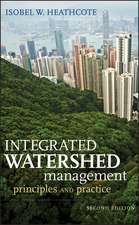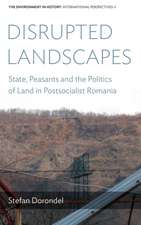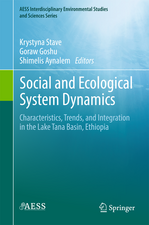Environmental Sensing: Analytical Techniques for Earth Observation
Autor James K. Leinen Limba Engleză Paperback – 21 sep 2014
| Toate formatele și edițiile | Preț | Express |
|---|---|---|
| Paperback (1) | 391.22 lei 6-8 săpt. | |
| Springer – 21 sep 2014 | 391.22 lei 6-8 săpt. | |
| Hardback (1) | 396.40 lei 6-8 săpt. | |
| Springer – 17 sep 2011 | 396.40 lei 6-8 săpt. |
Preț: 391.22 lei
Nou
Puncte Express: 587
Preț estimativ în valută:
74.88€ • 81.37$ • 62.94£
74.88€ • 81.37$ • 62.94£
Carte tipărită la comandă
Livrare economică 21 aprilie-05 mai
Preluare comenzi: 021 569.72.76
Specificații
ISBN-13: 9781493901715
ISBN-10: 1493901710
Pagini: 348
Ilustrații: XIV, 334 p.
Dimensiuni: 155 x 235 x 18 mm
Greutate: 0.49 kg
Ediția:2012
Editura: Springer
Colecția Springer
Locul publicării:New York, NY, United States
ISBN-10: 1493901710
Pagini: 348
Ilustrații: XIV, 334 p.
Dimensiuni: 155 x 235 x 18 mm
Greutate: 0.49 kg
Ediția:2012
Editura: Springer
Colecția Springer
Locul publicării:New York, NY, United States
Public țintă
ResearchCuprins
The Earth Observation Perspective.- Environmental Sensing.- Sensors and Systems.- Fundamentals of Image Processing.- Sensing Uncertainty.- Environmental Characterization.- Environmental Monitoring and Change Detection.- Thermal Sensing and Anomaly Detection.- Hyper-spectral Sensing.- Hyper-spectral Classification.- Object-based Analysis.- Forensic Remote Sensing.- Integrative Sensing.- Index.
Textul de pe ultima copertă
Remote sensing is a mature technology that has been largely under- utilized in a world increasing focus on Geographic Information Systems. With the goal of encouraging a wider appreciation of what this science can achieve, Environmental Sensing: Analytical Techniques for Earth Observation introduces the scope and method of remote sensing within the context of environmental analysis and assessment. Written in easy to follow language, the book presents cutting-edge techniques and innovative applications in a manner that is accessible to the non-technical professional. Incorporating extensive use of both the environmental and remote sensing literature, this book can serve as a valuable reference as well as a useful teaching resource in and out of the classroom. At a time when society is increasingly focused on the vexing issues surrounding global change and environmental sustainability, bringing remote sensing “down to earth” is both a timely and essential step toward enhancing environmental understanding and guide effective environmental decision making.
Caracteristici
Demonstrates that remote sensing science is affable Highlights where and how remote sensing can make valuable contributions to the study of our environment Represents a synopsis of the current approaches to the emerging science of earth observation Includes supplementary material: sn.pub/extras




















